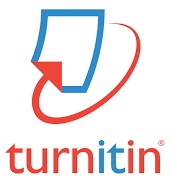Analisis Dampak Daya Apung Terhadap Benda di Lingkungan Sekitar pada Praktikum Pendidikan Ilmu Pengetahuan Alam
Abstract
This research aims to analyze the impact of buoyancy on objects in the surrounding environment in the context of Natural Sciences (IPA) educational practicum. The research uses a qualitative approach with simple experimental methods to measure the effect of buoyancy on various types of objects based on density and volume. Data was obtained through direct observation during practicum involving the research team. Data analysis using descriptive analysis by summarizing and interpreting observational data related to object behavior. The research results show that buoyancy plays an important role in determining whether an object will sink, float or float in water. The main factors that influence buoyancy include the physical properties of the object, such as the density relative to the fluid, and the volume of the object submerged. These findings contribute to the research team's understanding of Archimedes' principle and its application in everyday life.
Keywords
Full Text:
PDFReferences
Ajiij, I. M., & Supriyatna, D. (2024). Penerapan hukum archimedes pada kapal laut (mekanika fluida). Kohesi: Jurnal Sains Dan Teknologi, 3(2), 31–40. https://doi.org/10.3785/kohesi.v3i2.2922
Anjarwati, A., Setyawati, I., Wijaya, N. A., Sholeha, R., & Putri, S. D. M. (2022). Meningkatkan pengetahuan peserta didik mengenai perubahan wujud benda pada mata pelajaran IPA. Jurnal Pendidikan, Sains Dan Teknologi, 1(1), 60–66. https://doi.org/10.47233/jpst.v1i2.276
Diyana, T. N., Sutopo, S., & Haryoto, D. (2020). The study of students’ difficulties in mastering the concept of archimedes’ principle. Jurnal Pendidikan Sains (Jps), 8(1), 59–65. https://doi.org/10.26714/jps.8.1.2020.59-64
Harrell, P. E., Kirby, B., Subramaniam, K., & Long, C. (2022). Are elementary preservice teachers floating or sinking in their understanding of buoyancy? International Journal of Science and Mathematics Education, 20(2), 299–320. https://doi.org/10.1007/s10763-021-10160-7
Höttecke, D., & Allchin, D. (2020). Reconceptualizing nature?of?science education in the age of social media. Science Education, 104(4), 641–666. https://doi.org/10.1002/sce.21575
Koller, K. (2024). Integrating exploration as a learning context impacts feelings of empowerment and engagement. International Journal of Educational Research Open, 7(12), 1–10. https://doi.org/10.1016/j.ijedro.2024.100374
Kumala, D., Murdani, E., & Sumarli, S. (2024). Reducing the quantity of students who have misconceptions about archimedes’ law material using the children learning in science (CLIS) model. ORBITA: Jurnal Pendidikan …, 10(1), 16–21.
Lestari, A., Syofyan, H., & Handayani, F. (2022). Penerapan media nyata untuk mengatasi kesalahan konsep IPA pada materi gaya dalam air di kelas IV SDN 05 Pagi. Prosiding SENASTITAN, 5(4), 238–246.
Liao, J., Majidi, C., & Sitti, M. (2024). Liquid metal actuators: a comparative analysis of surface tension controlled actuation. Advanced Materials, 36(1), 1–10. https://doi.org/10.1002/adma.202300560
Maraisane, M. J. L., Jita, L. C., & Jita, T. (2024). The notions of floating and sinking: Exploring the conceptual knowledge of grade r teachers. South African Journal of Childhood Education, 14(1), 1–9. https://doi.org/10.4102/sajce.v14i1.1407
Marito, S., Khairiyah, S., & Humairah, S. (2024). Perkembangan kognitif melalui metode cerita pada anak usia dini. LOKAKARYA, 2(1), 63–70. https://doi.org/10.30821/lokakarya.v2i1.2755
Mufiana, S. S., Awandar, T. A. S., Juwariyah, N., Irbah, A. N., & Binsa, U. H. (2024). Pembelajaran steam dengan pengenalan konsep terapung dan tenggelam. Early Stage, 2(2), 92–100. https://doi.org/10.56997/earlystage.v1i4.1499
Nali, P. F. (2022). A short note on the buoyant force in nonuniform gravitational fields. Revista Brasileira de Ensino de Física, 44(44), 1–4. https://doi.org/10.1590/1806-9126-rbef-2022-0215
Pajang, S., Kaharu, S. N., & Tule, R. (2024). Konsepsi guru fisika tentang benda melayang dalam zat cair. JPF (Jurnal Pendidikan Fisika) FKIP UM Metro, 12(2), 154–170. https://doi.org/10.24127/jpf.v12i2.10818
Pranita, E. (2023). Kontrol jembatan otomatis menggunakan sensor ultrasonik berbasis arduino. Electrician: Jurnal Rekayasa Dan Teknologi Elektro, 17(3), 332–341. https://doi.org/10.23960/elc.v17n3.2524
Rahmi, P. (2020). Pengenalan sains anak melalui permainan berbasis keterampilan proses sains dasar. Bunayya: Jurnal Pendidikan Anak, 5(2), 43–55. https://doi.org/10.22373/bunayya.v5i2.6389
Rubiono, G., & Finahari, N. (2023). Analisis gaya apung dalam olahraga water tubing. V-MAC (Virtual of Mechanical Engineering Article), 8(1), 1–5. https://doi.org/10.36526/v-mac.v8i1.2669
Sulastri, I. (2020). Upaya meningkatkan hasil belajar konsep perubahan wujud benda siswa sekolah dasar melalui metode eksperimen. PEDADIDAKTIKA: Jurnal Ilmiah Pendidikan Guru Sekolah Dasar, 7(3), 24–35. https://doi.org/10.17509/pedadidaktika.v7i3.28022
Ubaydillah, U., & Supriyatna, D. (2024). Analisa hukum archimedes perilaku telur terhadap 3 zat cair yang berbeda massa. Kohesi: Jurnal Sains Dan Teknologi, 3(1), 61–70. https://doi.org/10.3785/kohesi.v3i1.2876
Uemoto, K., Narita, S., Harada, S., Sakamoto, Y., Tsuji, T., Oshitani, J., Kajiwara, H., & Matsuoka, K. (2023). Wireless measurement of float-sink motion of variously-shaped objects in gas-solid fluidized bed. Advanced Powder Technology, 34(9), 104–111. https://doi.org/10.1016/j.apt.2023.104111
Zhang, Y., Xie, G., Li, Y., & Sunden, B. (2022). Investigation on magnetic force and buoyancy force on flow and heat transfer of Al2O3-water nanofluid at various temperature-dependent thermophysical models by a novel PLBM. International Communications in Heat and Mass Transfer, 133(4), 1–10. https://doi.org/10.1016/j.icheatmasstransfer.2022.105970
DOI: https://doi.org/10.56842/jp-ipa.v6i01.437
Refbacks
- There are currently no refbacks.







